This post may contain affiliate sales links. Please read my disclosure policy.
Baking soda vs baking powder…which one is better? The answer is neither. They are just different. Both baking powder and baking soda are leavening agents commonly used in making baked goods. Because they perform similar roles and are frequently used in conjunction, these two ingredients are often confused. Learn more about these ingredients, what they do, and when to use them.
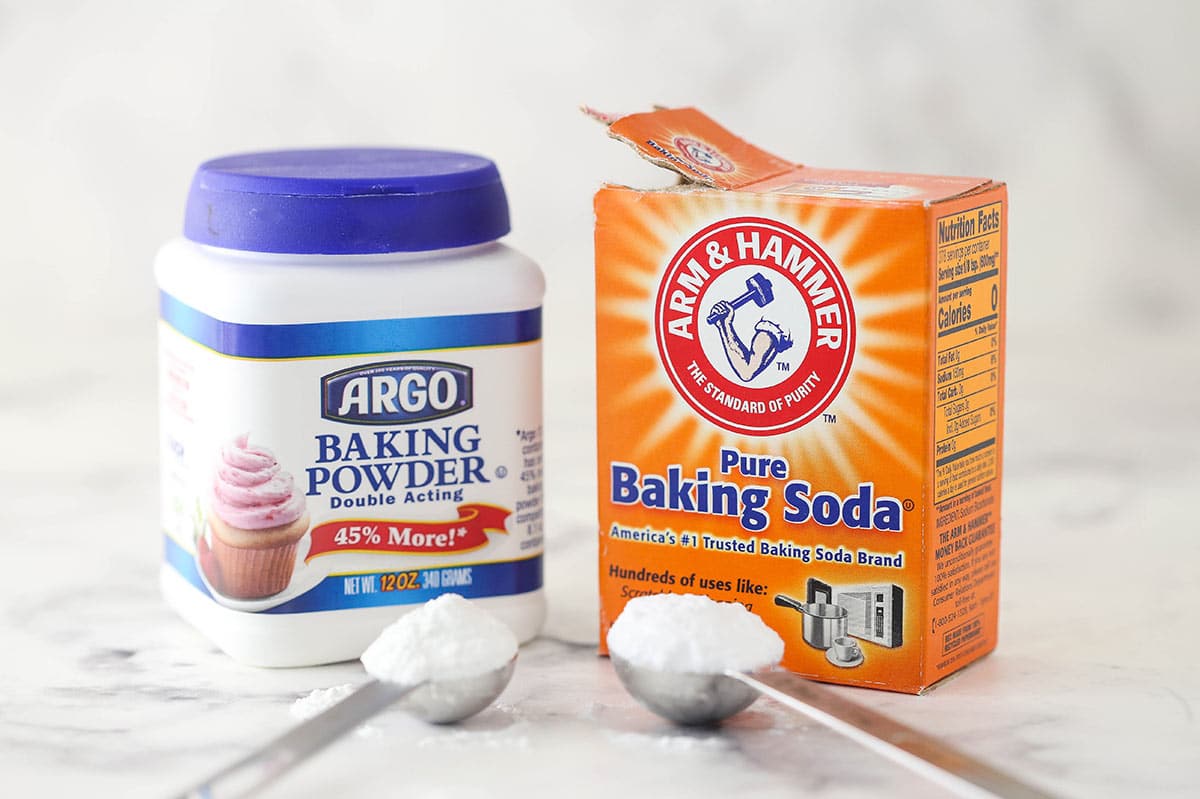
Everything You Need to Know About Baking Soda vs. Baking Powder
When I first started baking, I had no idea what the difference between baking soda and baking powder was. I didn’t know when to use one as opposed to the other, when to use both, or why it even mattered in the first place.
That doesn’t have to be you. It is my intention to walk you through the ins and outs of both ingredients and to help you understand how they are similar and what sets them apart. By the time you have finished, you will have become a more knowledgeable, confident baker ready to decide when, where, and why to use these two commonly confused ingredients.
What is Baking Soda?
Baking soda is pure sodium bicarbonate. When activated by an acid such as buttermilk, lemon, or molasses, it produces carbon dioxide and becomes a leavening agent. In the oven, that carbon dioxide works to expand and rise the dough/batter of the baked good.
Baking soda does more than just act as a leavening agent. We see its miracles at work most obviously when baking cookies, but the following applies to other baked goods as well.
- Delay setting. Baking soda works to delay dough/batter from setting, allowing it to spread during the baking process. This is great for cookies.
- Golden Brown. It encourages baked goods to brown more quickly, giving you a richer color and a more developed flavor.
- Flavor. It even contributes a saltiness (sodium bicarbonate is sodium after all) that helps balance the sweetness of the finished product.
As with anything in your kitchen, it is important to make sure baking soda stays fresh. After opening a box of baking soda, transfer its contents to an airtight container and store it at room temperature for up to 6 months. If you are questioning whether or not your baking soda is still fresh, simply combine 1/4 teaspoon with 2 teaspoons of vinegar. If the mixture doesn’t bubble, it’s time to buy new.
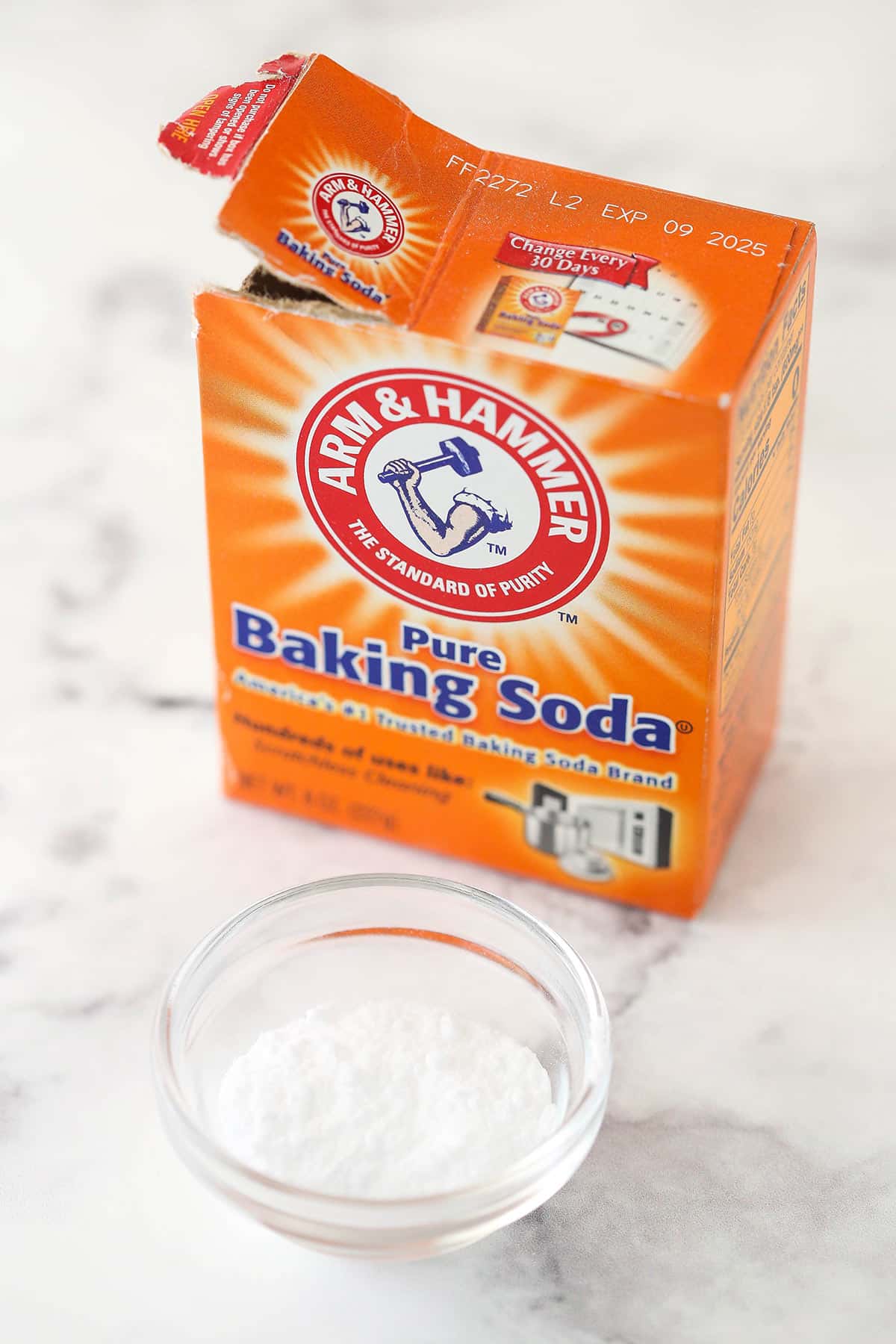
What is Baking Powder?
Baking powder is a leavening agent comprised of sodium bicarbonate, cornstarch, and a powdered acid such as cream of tartar. When it comes in contact with liquid, baking powder produces carbon dioxide and becomes a leavening agent, expanding and rising the baked good it is been incorporated into.
You most likely have double-acting baking powder in your kitchen. Double-acting baking powder goes through two activation stages. The first occurs when it comes in contact with liquid, and the second when it comes in contact with heat. It will become clear why this is an important distinction as you read on.
When it comes to keeping baking powder fresh, you can usually keep it in the container you bought it in for up to 6 months after opening. If you are not sure if it is still fresh, combine 1 teaspoon of baking powder with 1/3 cup of hot water. If the mixture doesn’t bubble, it’s time to move on.
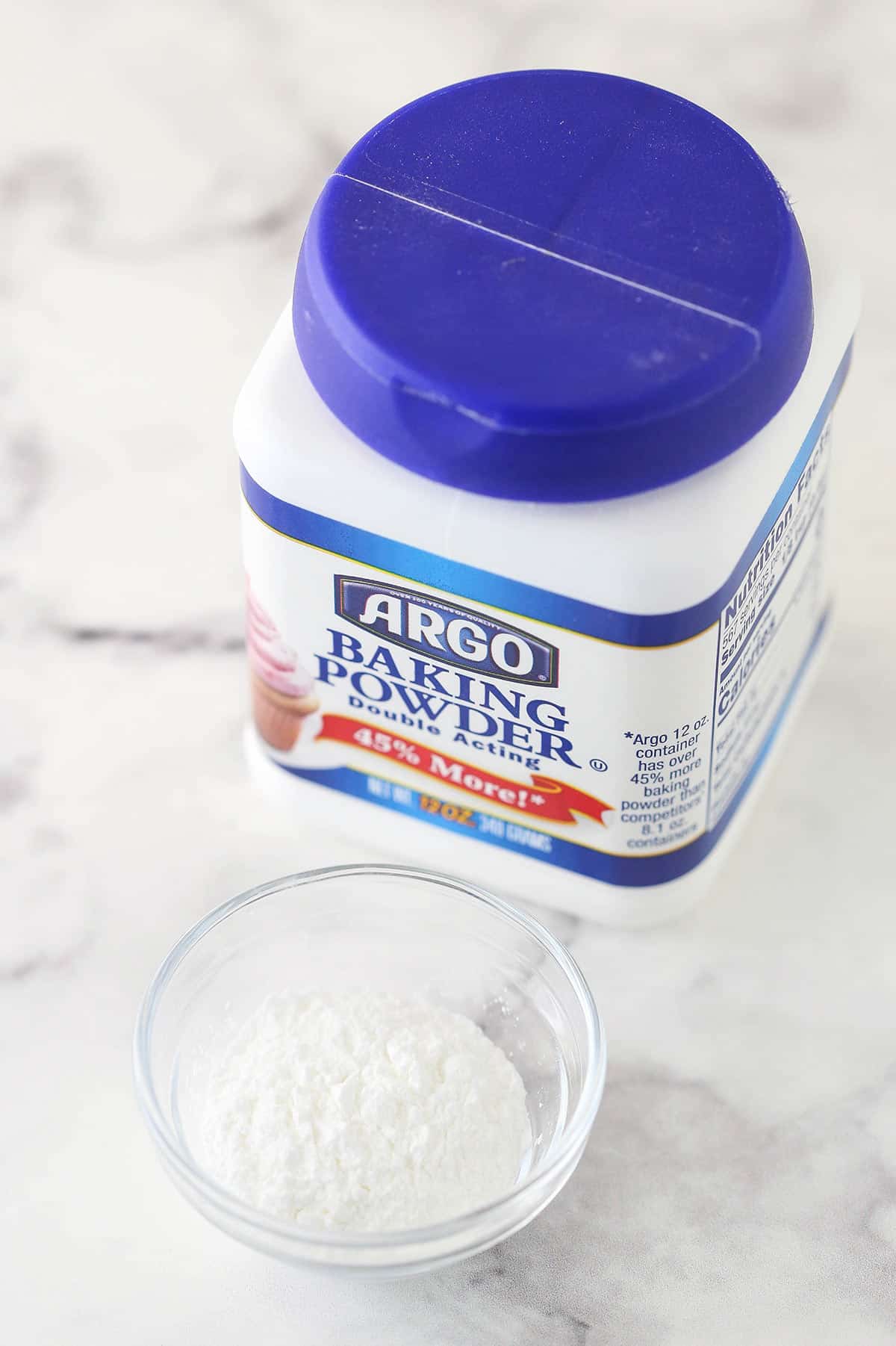
Similarities Between Baking Soda and Baking Powder
While baking soda and baking powder have slightly different compositions, they work in similar ways as leavening agents via their shared main ingredient, sodium bicarbonate. When sodium bicarbonate meets an acid such as the cream of tartar inherent in baking powder or an ingredient (think lemon juice or buttermilk) added to a dough or batter, it activates. What does that mean? In this case, it means it produces carbon dioxide. That carbon dioxide works to give rise to the batter/dough as it bakes, playing a huge role in preventing your baked goods from falling flat.
Differences Between The Two
While they are very similar and easily confused, there are a couple of key things that set baking soda and baking powder apart. Let’s go through them.
- Chemical composition. Where baking soda is comprised solely of sodium bicarbonate, baking powder contains sodium bicarbonate, cornstarch, and a powdered acid (usually cream of tartar).
- Activation. Baking powder needs nothing more than an added liquid (because it already contains an acid) to activate and release carbon dioxide. Baking soda requires the addition of an acid such as lemon juice, molasses, greek yogurt, or buttermilk.
- Timing. As soon as baking soda comes in contact with an acid, it starts to react. So by the time you get your dough/batter into the oven, much of the carbon dioxide production has already taken place and the leavening power of the baking soda has significantly decreased. Double-acting baking powder (the most common form) reacts first when activated by liquid but goes through a second reaction when exposed to heat. This means that its leavening power carries through the baking process more effectively than that of baking soda.
When to Use Baking Powder
Because baking powder does not require an added acid to activate, use it in recipes that…well…don’t have an added acid but still require leavening. The baking powder will do all of the leavening work on its own, leaving you with a perfectly risen baked good.
Double-acting baking powder is useful in recipes that require leavening but that you can’t get in the oven right away. Because double-acting baking powder gets a second wind in producing carbon dioxide when it encounters heat, it is perfect for recipes that require a bit more prep time outside of the oven such as cakes, scones, biscuits, etc..
When to Use Baking Soda
Use baking soda in recipes that have an added acid such as buttermilk scones, lemon cake, or molasses cookies. When the baking soda meets whatever acid the recipe calls for, it will activate, produce CO2, and work to puff up your baked good in the oven. Because baking soda starts producing carbon dioxide immediately upon activation and starts to lose steam after a while, it is best to use in recipes that you can pop in the oven as quickly as possible IF you are interested in maintaining its leavening properties.
Baking soda does more than just help your baked good rise, however. It is the perfect ingredient to add to cookies because it allows them to spread and helps get them to that perfect golden brown color we all love. Both of these added benefits of using baking soda will leave you with a chewier, richer, more visually appealing cookie.
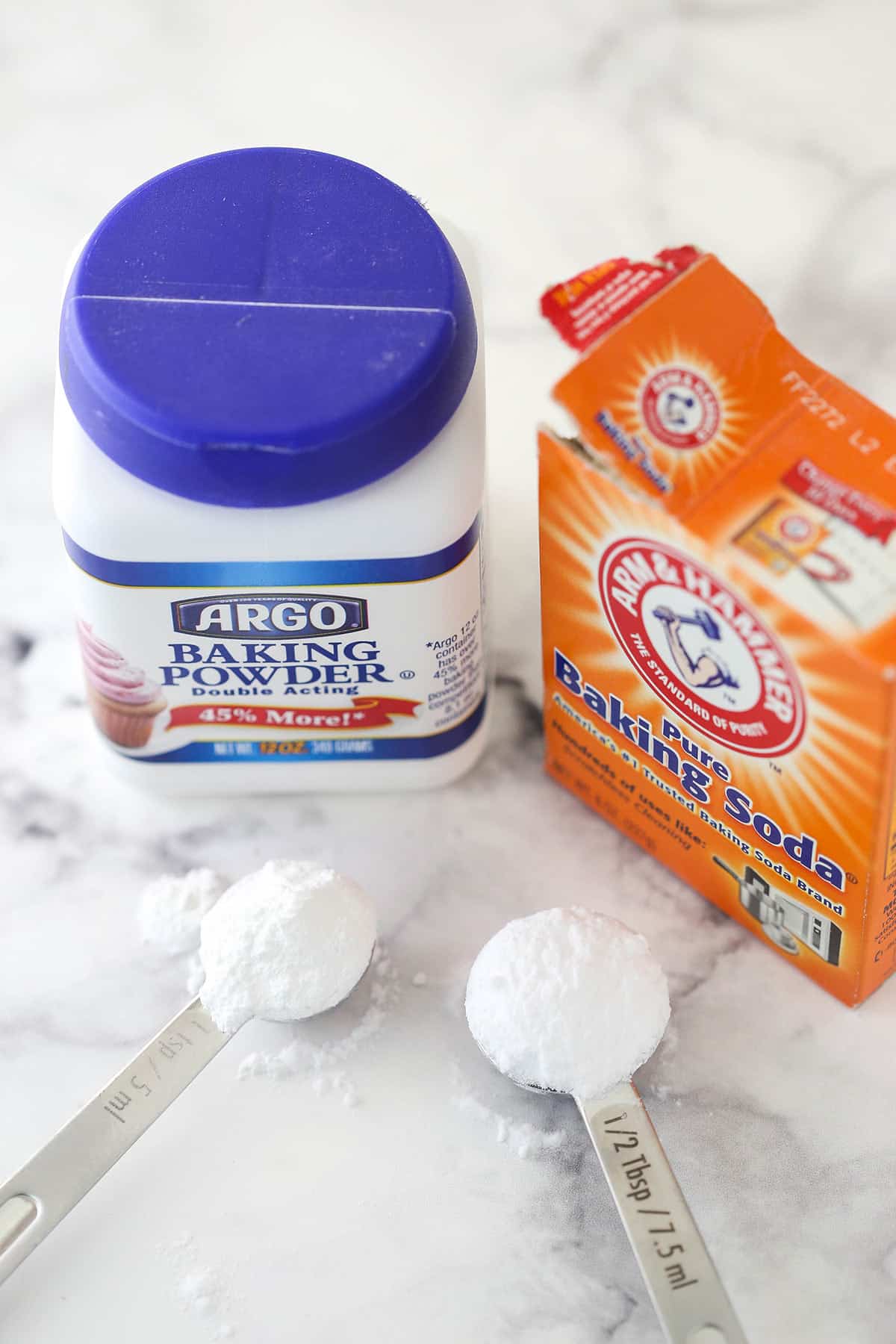
Why Do Some Recipes Call For Both?
Because baking soda loses some of its potency as a leavening agent before the dough/batter even enters the oven, baking powder is often added to make sure that the baked good achieve the desired rise. So, use the combination of the two in recipes that include an acid (buttermilk, molasses, etc.) and that need a little extra lift. Cakes and quick breads (like my Hummingbird Bread) are great examples.
What is a Good Baking Soda Substitute?
If you are feeling a baking frenzy coming on and find yourself without baking soda, there are a couple of substitutes you can use.
- Egg whites. Egg whites will add structure and lift to the baked good. Use 2 egg white per teaspoon of baking soda and remove an equivalent amount of liquid from the recipe. Whip the whites until stiff peaks form and fold into the dough/batter.
- Club soda. Club soda actually contains carbon dioxide (the bubbles!) so it will work similarly to activated baking soda. Make sure to get whatever it is you are making into the oven as quickly as possible before the bubbles run out.
Still searching through your kitchen in a panic? Check out this article on the 10 best baking soda substitutions.
What is the Best Baking Powder Substitute?
If you are out of baking powder and ready to get baking, all is not lost. You can easily use baking soda with the addition of an acid instead. Here come some popular examples. In any of these cases, note that it is important to get your dough/batter cooking as quickly as possible before the reaction between the baking soda and the acid loses steam.
- Baking soda + lemon. ½ teaspoon lemon juice + ¼ teaspoon baking soda = 1 teaspoon baking powder.
- Baking soda + buttermilk. ½ cup of buttermilk + ¼ teaspoon of baking soda = 1 teaspoon of baking powder. Reduce the liquid in the recipe by 1/2 cup.
- Baking soda + plain yogurt. ¼ teaspoon of baking soda + ½ cup plain yogurt = 1 teaspoon of baking powder. Use a bit less liquid in the recipe to make up for the additional moisture from the yogurt.
- Baking soda + cream of tartar. ½ teaspoon cream of tartar + ¼ teaspoon baking soda = 1 teaspoon of baking powder.
You can also use whipped egg whites as you would when substituting for baking soda.








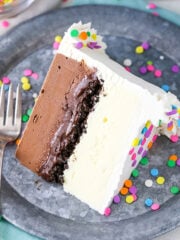

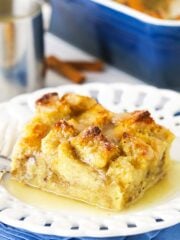
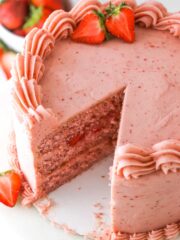
I loved this knowledge on baking soda and baking powder which I never knew. Thanks
I’m glad you enjoyed it!
Under When To Use Baking Soda, first sentence says Baking Powder. Is this Correct? Very helpful article
Good catch! It should say baking soda and has been updated. Thanks!
Thank you for this post. It clearly defines both baking soda and baking powder. Very helpful!
Firstly, I love your blog and recipes and love your helpful hints. Thanks so much for the explanation and the handy substitutes. I bake far less than I used to being empty nesters so it’s helpful to know of the substitute for baking powder if it’s expired.